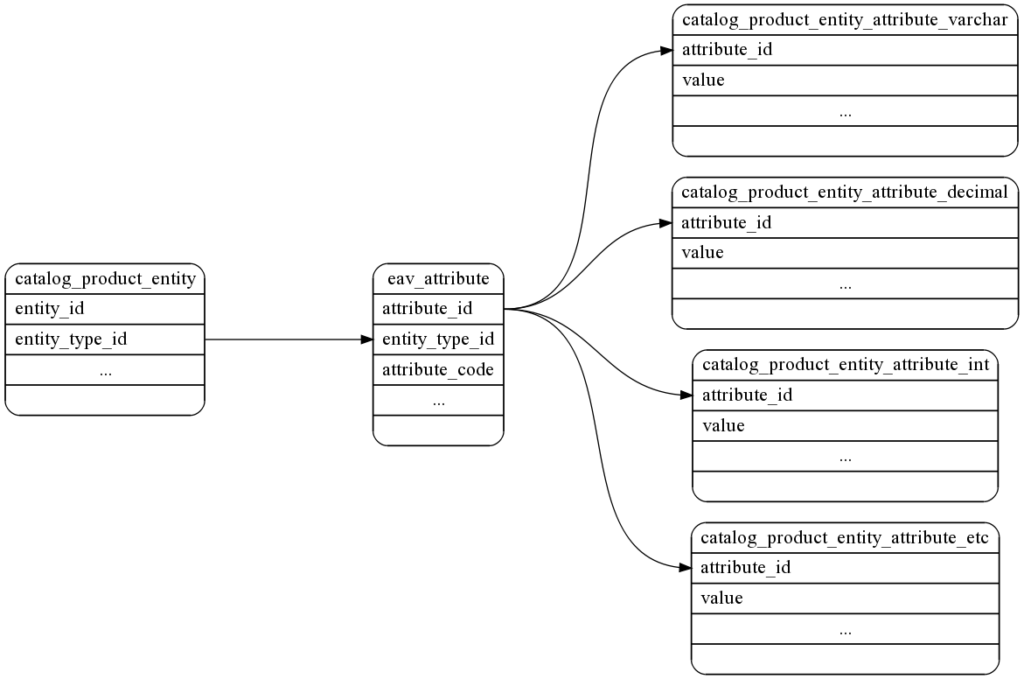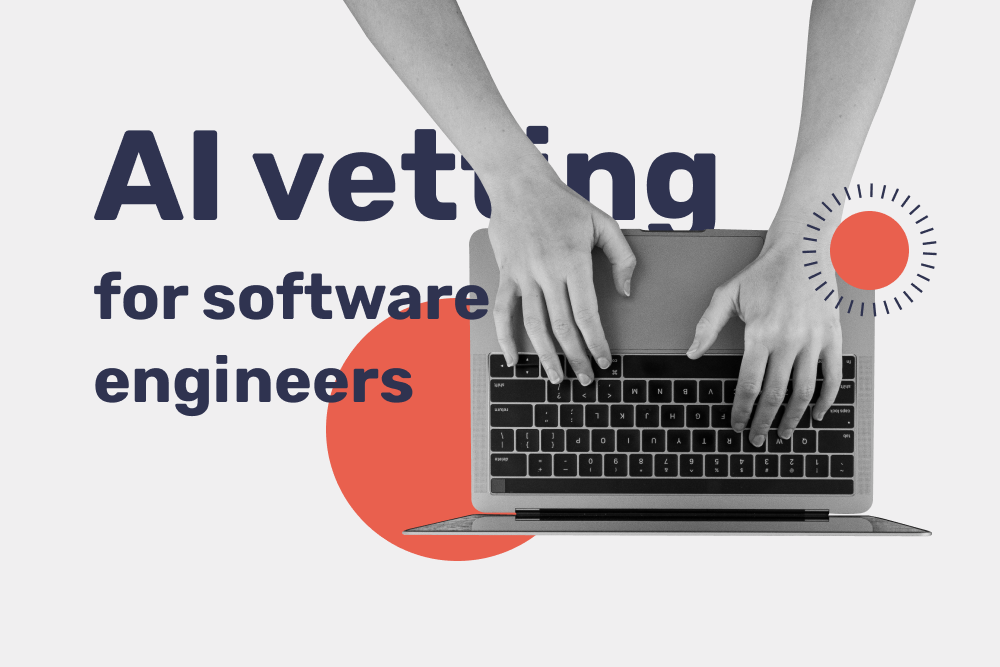When you hire Magento developers to build an e-commerce store, you want to make sure that a professional you onboard is creative, skilled, and willing to work as a part of a team. To make sure you find the right candidate during the interview and don’t waste time onboarding an employee who’s not a fit for the company, take your time to research basic Magento 2 developer interview questions and Magento tricky questions.

In this post, we offer a full rundown of Magento 2 frontend exam questions Bridge hiring experts use to find top-notch Magento developers.
15 Basic Magento Interview Questions
Before you move on to tricky tasks, make sure a developer you are considering as a future hire has a solid grasp of the theory and will not get lost in definitions. To shortlist candidates efficiently, start the interview by asking some of these Magento 2 developer interview questions.
Question #1. What is Magento 2?
Answer: Magento is an open-source programming language created for building e-commerce stores and shopping platforms. Magento 2 uses PHP as its backbone language.
Question #2. Name the top benefits of Magento.
Answer: Although the answers will vary candidate-to-candidate, most top developers immediately remark on the following advantages of the language:
- Heavy use of MVC in Magento 2 makes code modular, easy to manage, and read.
- High-mobile responsiveness, touchscreen-friendly admin panel.
- Powerful SEO features, easy-to-create XML sitemaps.
- Customizable security tools.
- Integrated with top marketplaces – Amazon, eBay, and many more.
Question #3. What types of products does Magento support?
Answer: Magento MVC architecture supports six types of items – simple, bundled, grouped, downloadable, configurable, and virtual.
Question #4. How are “pay” and “capture” Magento operations different?
Answer: When it comes to “pay”, developers use it to change the invoice status to “paid”, both when handling online and offline purchases.
“Capture” is a method used only for online purchases. It is usually called before “pay” and refers to the start of payment processing.
Question #5. Which scripting language supports Magento 2?
Answer: Magento 2 relies on PHP for scripting, as well as MySQL for Magento database architecture. The language uses MySQL 5.6. and PHP 5.4., 5.5., and above.
Question #6. Explain compilation in Magento.
Answer: the feature allows developers to compile all installation files of the language together to optimize the code’s performance. After the code is compiled, a store manager can expect a 25%-50% increase in page load speed.
It’s great if a candidate mentions the prerequisite for using Magento compiling: ensuring the readability of the “includes” directory.
Question #7. Give a step-by-step description of module creation in Magento.
Answer: To start with, give your module a name and define it in the app/code folder. For example, if we want to make a module “BridgeTeams”, here’s its file path:
app/code/MageHost/BridgeTeams.
Once the Magento 2 module architecture is created, a developer has to make a new file and name it registration.php. The next and final step is to enable the module inside the folder.
Question #8. Describe three deploy modes in Magento, as well as the differences between them.
Answer: there are three modes in Magento 2: default, developer, and production.
Developer
Once this mode is enabled, all the files you save to pub/static/ (except for front-end errors) become the symlinks of the original file. This is not a recommended mode to keep an app in since it slows the page down.
However, developers often use the mode for debugging, as it improves the efficiency of compilation and static loading.
Production
During the production mode, all the files in pub/static are generated. As the name suggests, this is the best mode to use for all stages of application production.
Default
Magento’s default mode is an intermediate state between Production and Developer modes. While new files are generated, it happens only when a new asset is required by the front-end. In the default mode, no file can be generated more than once.
Question #9. Describe Magento dependency injections
Answer: Dependency injection is one of the most widely used design patterns in Magento 2. It allows developers to add a dependency to a calling framework or a module. In Magento and other programming languages, dependency injections are often explained as the Hollywood principle.
So, it would be great to hear the iconic “Don’t call us, we call you” from a candidate during a job interview.
As for the advantages, here are the main benefits of using Magento dependency injections:
- Improves code reusability.
- Makes code easier to test.
- Promotes hassle-free app maintenance.
Question #10. Describe the difference between a Magento website and a Store.
Answer: While you shouldn’t expect a textbook answer from a candidate when asking such Magento 2 developer interview questions, make sure the answers you hear mention the fact that stores and websites define different parameters.
For example, the Store view defines product settings, while the website defines product prices. The app’s base currency is defined in the website view as well. In the store view, you can define the display currency.
Bonus question. Describe the factory class in Magento
Answer: Developers use factory classes in Magento whenever they need to generate code from scratch. By nature, factory classes are database entities and are generated automatically for each module.
Why are factory classes convenient? They allow app managers to access and edit entity records without calling the ObjectManager. This way, a developer doesn’t have to violate dependency injection principles and can closely follow best Magento coding practices.
When you ask a candidate whether or not a developer has to define a factory class manually, the answer should be – no, he doesn’t have to. However, the feature is supported and used wherever you need to define specific behaviors.
Question #11. What are the ways to count items in Magento 2? Which methods are preferred?
Answer: there are two ways to count products in Magento 2: the getSize() method and count().
Among the two, getSize() is considered a more efficient method since there’s no need to load a collection time and time again wherever there’s a need to count items.
On the contrary, the count() method slows down the app’s performance, as it requires reloading the collection to get an updated number value. As a result, your app drains a lot of resources and is difficult to maintain.

Question #12. Name all the Magento Design Patterns you know
Answer: the programming language supports 12 design patterns. However, there’s no need to expect that a candidate names all of them. Keep in mind that, due to stress, one or two names can slip off the developer’s mind when answering Magento 2 interview questions.
Nevertheless, a skilled Magento developer should name at least 8-10 among the following design patterns:
- Model-View-Controller pattern
- Factory pattern
- Registry pattern
- Singleton pattern
- Front-controller
- Service locator
- Object pool
- Lazy loading pattern
- Module pattern
- Iterator pattern
- Prototype pattern.
Question #13. Why should I choose Magento 2 over Magento 1?
Answer: there are several reasons why Magento 2 is superior to the first version of the programming language. Here are the language’s top benefits:
- Scalable, easy-to-manage architecture, built on top of PHP, Zend, Symphony, Apache, and Nginx.
- PWA integration support and a built-in page builder.
- Higher page loading speed and improved performance.
- Intuitive backend UI.
- Mobile-friendly admin panel.
- Facilitated extension installation and update.
Question #14. Define static blocks in Magento 2
Answer: static blocks are those that host unchangeable information. A developer can add a static block to any page of the store. Some of the common uses of static blocks in e-commerce websites are integrations with Google Maps that show the location of the office or a store.
Question #15. Describe the Magento module based architecture: EAV
Answer: EAV stands for Entities, Attributes, Values. Here’s the breakdown of the concept component by component.
Entities are Magento data items – products, customers, categories, orders, and others. Each of these have a separate, dedicated database record.
Attributes are the data elements each entity has. It goes without saying that a single entity can have more than one corresponding attribute. For example, a product can have a status, name, price, number of items, and other attributes attached to its record.
Values are the data elements that define attributes. For example, the value of the status attribute of the product entity will be “In stock” or “Sold out”.
10 Advanced Magento 2 Interview Questions
If a candidate you are interviewing is acing the basic Magento questions, it’s time to take the difficulty up a notch. Here are some top-league Magento 2 solution specialist questions that’ll help you shortlist highly skilled Magento developers.
Question #1. What are the most efficient ways to improve the efficiency of Magento apps?
Answer: there are dozens of factors that can be slowing down the performance of a Magento 2 app. When asking Magento 2 developer interview questions, make sure that the candidate you are interviewing mentions at least half of or all the ideas listed below.
- Disable all the modules you are not using at the moment.
- Enable caching.
- Optimize application servers.
- Move the stylesheets to the top.
- Steer clear of using CSS expressions.
- Rely on Magento Log as little as possible.
- Move scripts to the bottom, delete the unused ones.
- Optimize images.
Question #2. You are designing a module that has to automatically share a newsletter with all subscribers at given intervals of time. How to make sure the newsletter gets to subscribers successfully?
Answer: At first, a candidate needs to ensure that the system crontab contains bin/magento cron: run. Then, he needs to run \MyCompany\MyModule\Cron\NewsLetterSender::execute and register it in etc/crontab/.xml.
Don’t let wrong answers like register a plugin for ModelCustomer or execute MyModule\Cron\NewsLetterSender::execute get you off track.
Question #3. Choose an architectural pattern that allows creating store-specific custom values in the admin panel.
Answer: the feature is available in the Extension Attribute view.
Question #4. A developer wants to restrict the access to a custom ACL resource he is about to create. After he does that, which items of the ACL will have restricted permissions?
Answer: Storefront login, system configuration sections, and adminhtml controllers.
Question #5. What is the best way to create a new Magento installation for a client switching from Magento 1 to Magento 2.
Answer: if a candidate keeps the upgradability and scalability of the final product in mind, the best way to solve the problem is to call the php bin/magento setup:migrate<path-to-m1-installation><new-version> command.
Question #6. Which is the best way to set up Magento store selling in two countries, with separate payment methods?
Answer: The most convenient way to manage such a website is by creating two separate payment scopes within a single store.
Question #7. A customer added only a downloadable product to the cart. How will such a cart be different from the one that has a simple product added?
Answer: there will be no shipping address in the quote object.
Question #8: A client wants to set different prices for the same product for various store scopes. How would a developer reply to such a request?
Answer: These Magento 2 frontend interview questions test the candidate’s ability to assess requests realistically and say no to the impossible one. The right answer here is that, as for now, such a thing is impossible. Magento 2 prices can only be scoped globally or for several websites.
Question #9. Which of the following operations will be affected the most by a large number of running stores or product catalog expansion?
Answer: for this question, we recommend giving a candidate a couple of options to choose from. For example, offer these as answers to choose from:
- Adding new product attributes to the catalog.
- Loading a product page.
- Saving a product in the admin area.
- Adding new tax rates to the database.
Among the answers to Magento 2 interview questions, listed above, adding new attributes to the flat catalogue is the most impacted operation.
Question #10. Put the following translations in order.
- Translate.csv team translations (the file is located in the theme locale/[locale]/.
- Translating module files located in app/locale/[locale]/.
- Translating files stored in DB table core_translate.
Answer: 2,1,3.
Final notes on Hiring a Magento 2 Developer
When hiring a Magento 2 developer, focus on diving Magento 2 developer interview questions into theoretical and practical categories. Ensuring that a specialist you hire has the knack of concepts is your way to know she will not struggle with documentation and can communicate with everyone in the team.
On the other hand, Magento 2 interview questions and answers for experienced developers directly test problem-solving skills and the candidate’s ability to apply theoretical concepts to real-life scenarios.
Hire Magento 2 Developers With Bridge Teams
Finding skilled talent in Magento 2 is not easy if you consider the US and Western Europe. The professionals of these offer-saturated regions are picky when it comes to choosing their next workplace. Other than that, hiring a Magento 2 developer in the States or EU is expensive: you’ll spend around $65,000 a year for a middle-level specialist, according to Glassdoor.
Starting a remote office is another way to organize work business owners should consider. Assembling a team in countries with fewer development job openings but a lot of bright talent is faster and cheaper.
The goal of Bridge.teams is to connect business owners from North America and Western Europe with teams from Eastern Europe and Latin America. You will not be paying for a typical outstaffing model where your coders could be working on dozens of projects at times.
Instead, this will be an in-house team you have full control of, stationed abroad. Managing an office in a different country sounds expensive – but it isn’t. Find out how much you’ll have to pay for a team of Magento developers using our calculator.
To hire an affordable and skilled team, get in touch with us – we’ll happy walk you through every step of assembling your future office.



